|
Wild Camphor Bush (Tarchonanthus camphoratus) |
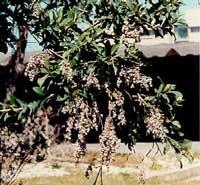 |
-
Bushy tree that grows up to 5 m high
-
Can be easily identified by the deeply grained bark and by the slight camphor smell of the crushed leaves
-
Leaves are green above and grey below
-
Flowers appear in winter (Mar -Nov) and are creamy coloured
-
Seeds are covered by white fluff
|
|
Wild Silver Oak (Brachylaena discolor) |
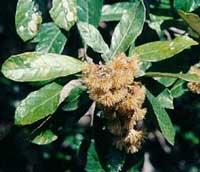 |
-
Another bushy tree reaching about 4 to 5 m in height
-
Leaves are dark green above and whitish with dense hairs below
-
Creamy white flowers appear in late winter and look like miniature Scottish thistles
-
Male and female flowers are borne on separate trees
-
Fruit is a nutlet with a brownish covering of hairs
-
Well adapted to living in dunes because the branches can set down roots while being covered with sand from moving dunes - in this way the tree can keep pace with sand inundation
|
|
White Milkwood (Sideroxylon inerme) |
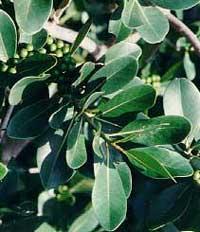 |
-
Milkwoods are typical of coastal bush - but are also found in the south Cape forests
-
Called Milkwood because of the white latex which appears when a leaf or twig is broken
-
Leaves are quite thick and a dark glossy green
-
The edge of the leaf rolls in underneath - this characteristic can be used to identify it
-
Leaves also often have blisters or galls, caused, believe it or not, by a virus!
-
Flowers are small and inconspicuous - but the fruit is easy to spot and turns dark purple in summer
-
The tree also has a characteristic rancid scent during summer
|
|
Rooikrans (Acacia cyclops) |
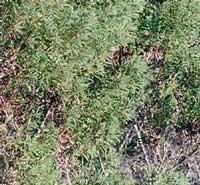 |
This is an exotic invader species!
-
Rooikrans means "red wreath" and is so called because of the red ring or aril around the seed
-
This plant can grow up to 7 m tall and forms very dense stands
-
First introduced from Australia to stabilise the dunes on the Cape Flats - was then introduced here for the same purpose
-
Because of the lack of natural predators here, it soon became a pest species
-
Very difficult to remove from an area - seeds germinate quickly after fires; resistant to ring barking and produces a huge seed bank every year
|
|
Port Jackson Willow (Acacia saligna) |
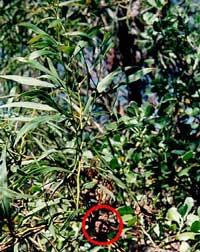 |
This is an exotic invader species!
-
Introduced for the same reasons as Rooikrans - namely to stabilize moving dunes
-
Has spread widely since
-
After much testing a predatory wasp from Australia was introduced - seems to be making headway in destroying this pest plant
-
The wasp lays eggs in the twigs and reproductive parts of the tree, causing galls - enough of these galls will prevent the tree from flowering and producing seeds
-
Note the gall ringed in the linked picture
|
|
Dune Scrub Everlasting (Helichrysum teretifolium) |
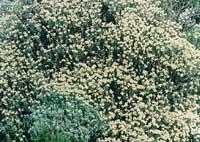 |
-
A highly branched shrub, up to 50 cm tall
-
Bears clusters of white flowers with yellow centres
-
The white "petals" are actually the flower bracts, while the yellow centre comprises many small flowers
-
Flowers appear in spring and make a pretty feature in many gardens
-
The plants are called Everlastings because the flowers dry well and retain their shape and colour for many years
-
Many people believe that this shrub has magical properties and can be used to protect a house from lighting strikes
|
|
Dune Daisy (Felicia echinata) |
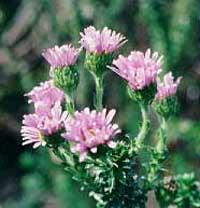 |
-
Perennial shrub which grows up to 40 cm high
-
Leaves are bright green and very prickly - hence the name "echinata" (means spiny)
-
This flower is very common in Dune Fynbos and anywhere where dunes have been stabilised
-
Endemic to the Eastern Cape
|
|
White Bristlebush (Metalasia muricata) |
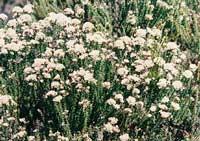 |
-
Twiggy bush that can grow up to 4 m high - usually about 1 to 2 m high on the trail
-
Leaves are tiny (10 mm long) and are densely clustered on the stems
-
This bush carries flowers throughout the year - although they are at their best in the late winter
-
Flowers are mainly white, but pink and reddish variations can be found
-
During summer the seeds disperse and the flowers lose their brilliance
-
One of the dominant shrubs of the coastal vegetation
|
|
Bush-tick Berry; Bitou (Chrysanthemoides monilifera) |
 |
-
Bitou forms a large bush with bright green roundish leaves
-
Young leaves are covered by fine cobweb-like hairs
-
Has flowers for most of the year - the best show in spring
-
It has a profusion of small juicy purple berries - make it a favourite of birds
|
|
Pink Ground Orchid (Satyrium membranaceum) |
 |
-
Consists of two or three membranous leaves the size of a saucer - hugs the ground closely
-
From this it sends up a tall (40 cm) stalk which bears the flowers
-
The stalk appears from about August, and the flowers open in September and October
-
They range from pink to red in colour
-
Flowers last for about a month and then the entire plant dies back
-
Bulb rests during summer and sends out leaves during winter - the period of highest rainfall
|
|
Cape Sumach (Osyris compressa) |
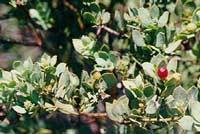 |
-
Forms a large bush or small tree up to 5 m tall
-
Leaves alternate and crowd on twigs, giving them a squared appearance - especially when the bush grows in hot areas
-
Easily identified by this leaf pattern
-
In more shaded areas the leaves are spaced further apart
-
Flowers are small, greenish and inconspicuous
-
Fruits are large and change from green, through red to dark purple when ripe - another favourite of the birds!
-
Bark can be used for tanning hides, and the berries can apparently be used for dying the hair of horses and cattle
|
|
Wax Berry (Morella cordifolia) |
 |
-
Forms a low-growing, erect shrub growing up to 50 cm on the trail
-
Brown flowers are borne in spring and by late summer the small wax-covered berries are plentiful
-
Berries themselves are purple, but have a grey waxy coating - this wax may be melted down and used
-
This wax was an important source of candle wax for early European settlers
|
|
Coast Olive (Olea exasperata) |
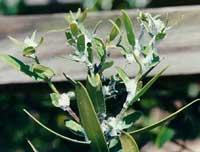 |
-
The Coast Olive can grow up to 7 m tall - on the trail it is low growing and forms dense stands on stabilised dunes
-
One can just imagine what was going through the mind of the person who named this plant "exasperata"!
-
This plant has a mealy bug feeding off it
|
|
Steekgras (Stipagrostis zeyheri) |
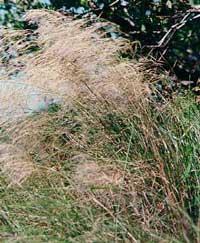 |
-
Steekgras grows up to 0.5 m tall
-
Easy to recognise - the seed heads are feathery and the dried leaves coil
-
Often has a soft bank of dry curly leaves at the base - when collected they can make a soft comfortable bed for camping and also make excellent tinder
-
The softness of the dry leaves is in strong contrast to the name which means "sticking" or "sharp" grass
|
|
Coast Cabbage Tree (Cussonia thyrsiflora) |
 |
-
This is a rambling plant which can form an untidy bush on its own
-
On the trail it is often seen growing among other plants and using them as a support
-
Leaves are glossy green and are divided into 6 to 8 leaflets arranged like the fingers on a hand
-
Fruits are quite unusual and are borne in clusters on short stalks
|
|
Dune string (Passerina rigida) |
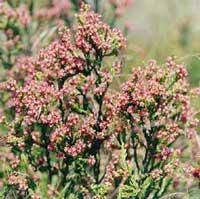 |
-
Very common on the trail
-
It can form a tall gangly bush up to 2 m tall
-
Very small triangular leaves which press closely to the stem
-
For most of the year it is a uniform bright green plant - during spring it bears clusters of reddish flowers
-
Called dune string because bark strips were woven and twisted into string and lengths of rope in the past
|
|
False Spike Thorn (Putterlickia pyracantha) |
 |
-
Forms thick impenetrable thickets
-
Grows to about 2 m high
-
The modified stems, which initially appear as thorns, later sprout leaves to continue the growth of the plant
-
Flowers are small and white, but the fruit are quite large and conspicuous
-
The root of this plant is reputedly used in beer as an aphrodisiac - other parts of the plant are commonly used for chest pains and snake bite
|
|
Cape or Dwarf Beech (Rapanea gilliana) |
 |
-
Not much information available on this bush
-
Seems to have a limited distribution as it appears only to occur in Dune Fynbos, where it is very common
-
Bears small greenish flowers and has a plentiful crop of green to dark purple berries
|
|
Garlic Buchu (Agathosma apiculata) |
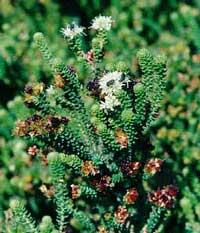 |
-
Garlic Buchu often betrays its presence on hot days with its heavy, sometimes unpleasant aroma
-
A member of the citrus family - thus has many aromatic oil glands in the leaves
-
Leaves grow close to one another, and the tip of the stem forms a little ball of leaves
-
Flowers attract many different insects - from beetles to bees
|
|
Monkey Rope (Cynanchum obtusifolium) |
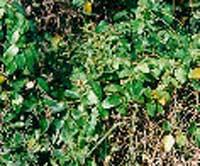 |
-
Many of the slender green creepers found in southern Africa are commonly called Monkey Rope
-
This particular Monkey Rope is very common on the trail
-
Winds around plants and can be a problem - chokes other plants and can deprive them of sunlight
|
|
Confetti Bush (Coleonema pulchellum) |
 |
-
Attractive little shrub often cultivated for gardens - several varieties are available
-
Belongs to the Citrus family and has a very pleasant smell - reminiscent of thyme or sausage spices
-
Bears numerous small white or pink flowers from August to late October - makes the bushes appear as if they have been strewn with confetti
|
|
Dodder (Cuscata campestris) |
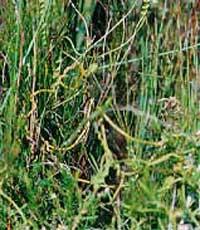 |
-
Dodder is a parasite which can cause great damage to other plants
-
Here it is seen climbing over some Restios
-
Flowers are small (2-3 mm), green and generally inconspicuous
-
Fruit appear in spring and is green, thin skinned and juicy - turns bright red and is thus spread by birds
|
|
Cross Berry (Grewia occidentalis) |
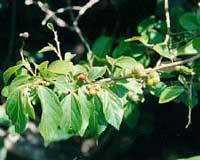 |
-
A large scrub that can grow to an untidy tree
-
Flowers are delicate and pink-mauve in colour
-
Fruit appear as lobed berries, with 2, 3 or 4 lobes
-
The fruit is brown and sometimes sticky when ripe - can be eaten by humans and tastes like dates
-
This plant has a variety of uses, e.g. the Zulus use it as medicine for childbirth and to alleviate impotence, and among the Xhosas it was used to make spear handles. The berries can also be made into a delicious jam to be enjoyed by all!
|
|
Little Jujube (Phylica ericoides) |
 |
-
Very common on the trail - does not seem to have a generally accepted common name
-
Belongs to the Jujube Tree Family - we call it the little Jujube or klein drogies when we take children out on the trail
-
Flowers are small, white and woolly - are similar in shape to the small bell shaped ericas
-
Fruit become dark red to black when ripe and seem to be enjoyed by birds
|
|
Dune Crow-berry (Rhus crenata) |
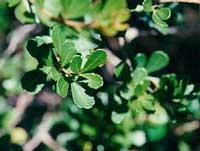 |
-
Several members of the Rhus family found on the trail
-
The sap of these bushes is a mild irritant
-
Most of them, the Crow-berry included, have small green to white flowers and dark berries
|
|
Sore Eye Lily or Tumble Weed (Boöphane disticha) |
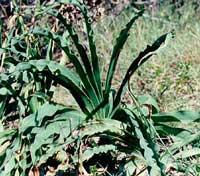 |
-
These highly unusual bulb plants are found on one section of the trail only
-
Usually occur in grassland - quite strange to encounter them in one of the most densely vegetated areas of the trail
-
Flowers are borne on long stalks that grow out from a central point
-
This inflorescence dries out, is snapped off by the wind and blown about - thus spreading the seeds
|
|
Wild Iris (Moraea polystachya) |
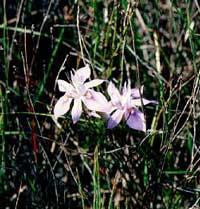 |
-
Despite beautiful flowers, this little bulb plant is poisonous
-
Usually occurs farther inland in dry clay soils
-
Many farmers try to eradicate it as it can kill sheep and goats
-
Also found only on one part of the trail
-
Has a short flowering period from August to September
|